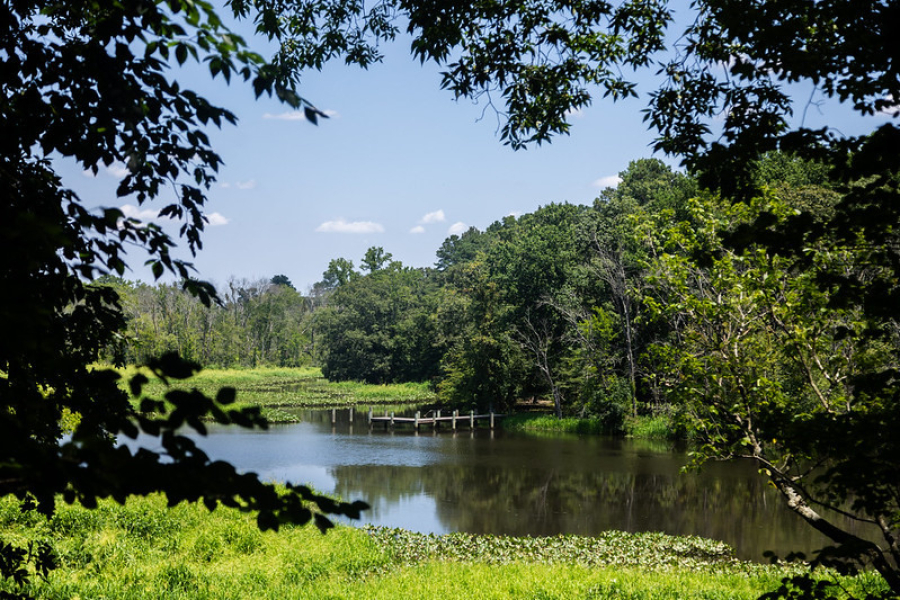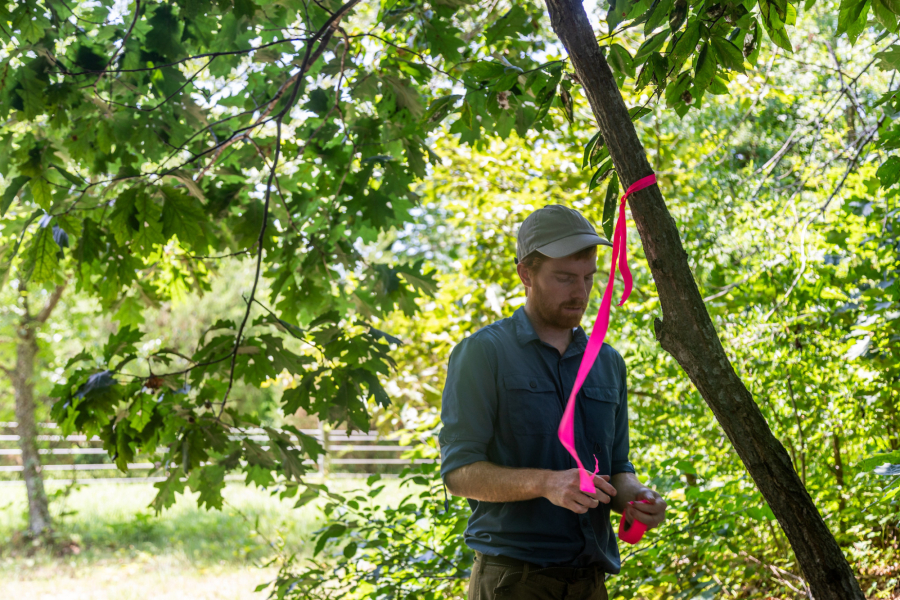Near the birthplace of Frederick Douglass, a lush wetland park awaits
A fitting memorial to an American hero takes shape in Talbot County

On the east bank of Tuckahoe Creek in Queen Anne, Maryland sits a lush, forested wetland that has seen relatively little change since 1818, when one of the greatest American heroes was born there.
Frederick Douglass, then named Frederick Augustus Washington Bailey, spent the first seven years of his life in the area now known as Queen Anne. He lived in his grandmother’s cabin, on a farm where they were both enslaved. His mother, who he saw mostly at night, lived 12 miles away on a separate property. The only thing he knew about his father was that he was a white man.
“Few slave-mothers know anything of the months of the year, nor of the days of the month,” writes Douglass in his autobiography, “My Bondage and Freedom.” “They keep no family records, with marriages, births and deaths.”
It’s because of Douglass’ multiple autobiographies, combined with records kept by Anthony Adams, the man who enslaved Douglass and his grandmother, that we know so much about the early life of the famous abolitionist. Researchers have deduced that he was born in February 1818. His official birthday on the 14th was picked by Douglass himself as a Valentine to his mother.
Today, Talbot County continues to pursue a fitting memorial for Douglass on a park that was officially opened in 2018, on the bicentennial of Douglass’s birth.
Tucked into the rural landscape of Queen Anne, Frederick Douglass Park on the Tuckahoe is a 107-acre property that includes a meadow, an open field that was previously farmed, educational signage and several acres of forest and wetland separating the park from the creek.
“All throughout the area is just a mosaic of wetland types,” says Will Saffel, an environmental scientist at Environmental Systems Analysis (ESA). “And honestly, these are some of the best ones that I've ever seen.”
ESA was hired to provide an environmental assessment of the site to ensure that the park’s development wouldn’t negatively impact the creek or its wildlife. During the assessment, they noted 40 acres of lush wetlands, unique freshwater tidal plants and 131 old growth trees, many which have been growing for over 200 years.
“Some of those trees have been growing since Frederick Douglass was alive,” said Saffel.

Three years after the park’s 2018 opening, Talbot County Department of Parks and Recreation released a master plan outlining a vision for the property that is sure to make it a premier destination. The plan includes a set of hiking trails down to the water, a kayak launch, overlooks along the creek, a pollinator meadow, a memorial space and a sprawling visitor center. When fully developed, the visitor center would include galleries for interpretive displays, auditorium space for programs and opportunities for research and scholarship—all revolving around the life and learnings of Frederick Douglass.
“Woven into this [park] is the Frederick Douglass story and the story of enslaved people and what they might have experienced at that time on a property like this,” said Cassandra Vanhooser, the director of Talbot County Economic Development.
Vanhooser has been the driving force behind Frederick Douglass Park on the Tuckahoe, bringing together various stakeholders and generating momentum for what is sure to be a several-years long process.
So far, Talbot County has gone through several planning phases to make sure the proposed development does not disturb existing wildlife along the creek, damage potential archaeological sites or overwhelm community traffic. Most importantly, Vanhooser wants to make sure that the interpretive elements tell the story of Frederick Douglass and Maryland’s enslaved people in a way that is accurate and meaningful. To do so, the Talbot County team is relying on the words of Douglass as much as possible.
“We don't have to guess what Frederick Douglass would have said about it because he was a prolific writer and a gifted orator,” said Vanhooser. “We try to use his words to tell the story whenever possible.”
A steering committee made up of community members, town leaders, historic and environmental researchers and two descendents of Frederick Douglass also provided significant input into the master plan and continue to guide the process.
“We feel that it's important that the family is involved,” said Vanhooser. “If we're saying or doing something that they feel is incorrect or inappropriate, then we don't want to do it.”

Talbot County is currently in phase one of three in its master plan. They are finalizing designs for the pollinator meadow, interpretive panels and the engineering designs for phase two, including the creek’s overlooks and the memorial pavilion.
Substantial investment is needed to bring the entire master plan to life, particularly the proposed visitor center, though for the time being you can still visit the park and walk down to Tuckahoe Creek.
Frederick Douglass Park on the Tuchahoe is just a 10 minute drive from Tuckahoe State Park, a larger property with trails and boat launches. The Harriet Tubman Underground Railroad State Park includes a number of sites throughout Maryland’s Eastern Shore. The historic town of Easton is within 12 miles of the park as well.
Projects such as this are a win-win for both historic preservation and environmental conservation. Preserving the forest and wetlands along the Tuckahoe are critical for maintaining clean water and habitat for wildlife. A public park gives people a way to enjoy the scenery while learning about an American hero with roots right here in the Chesapeake.
The stories can help us understand our own connection to the Chesapeake Bay and inspire the actions needed to protect it.

Comments
There are no comments.
Thank you!
Your comment has been received. Before it can be published, the comment will be reviewed by our team to ensure it adheres with our rules of engagement.
Back to recent stories